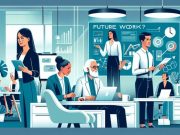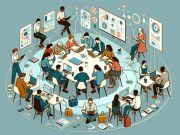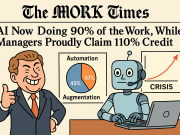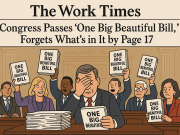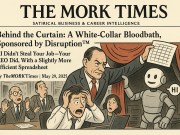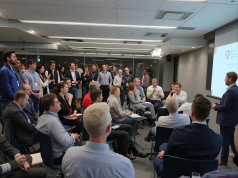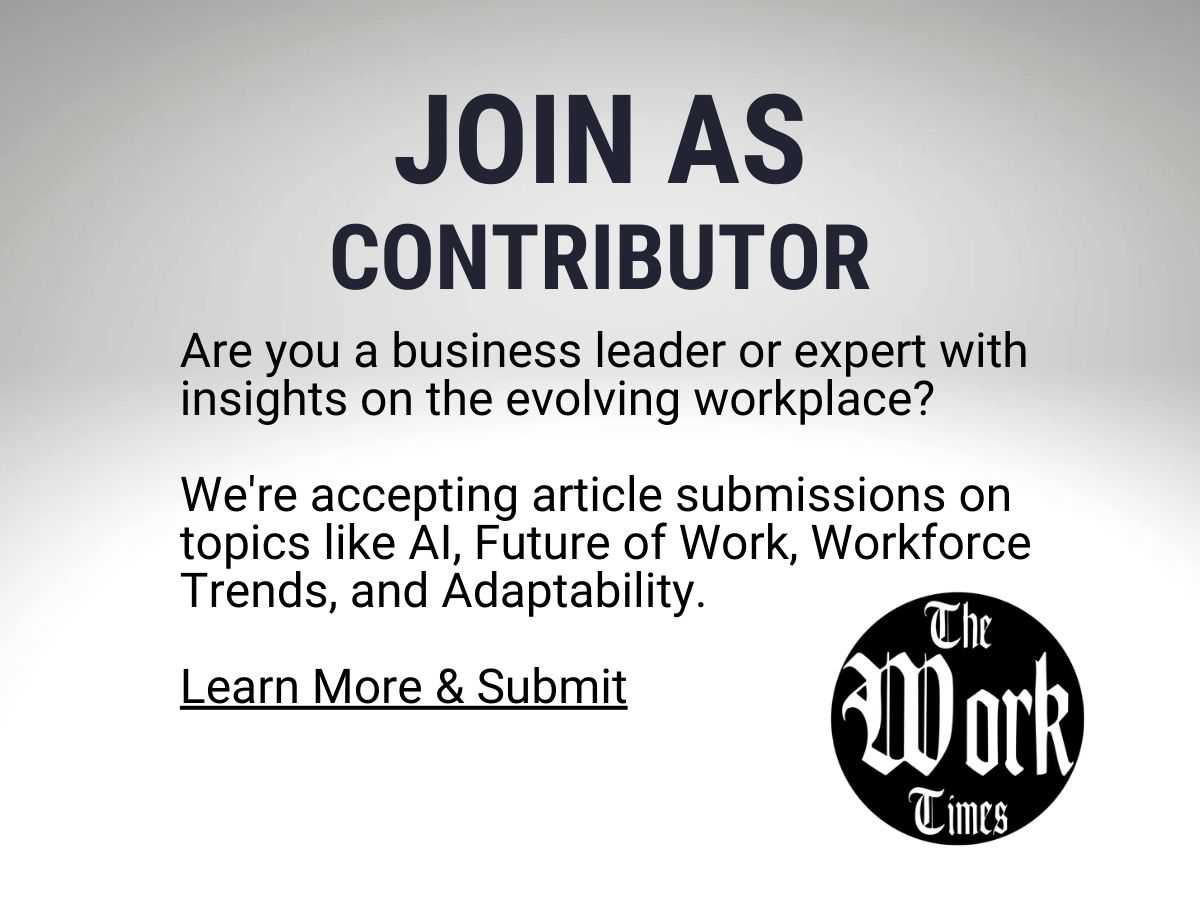The rapid evolution of technology and the global economy has ushered in a new era of work—one characterized by automation, artificial intelligence, and unprecedented connectivity. As industries transform, so too must the skills of the workforce. Yet, the QS World Future Skills Index 2025 and the World Economic Forum’s Future of Work 2025 reveal troubling gaps in worker readiness, with millions at risk of being left behind. These reports underscore the urgent need for a nationwide approach to lifelong learning, ensuring workers not only stay competitive but thrive in this dynamic environment.
This editorial explores the pressing gaps in lifelong learning, framing them as opportunities for progress. By adopting forward-thinking policies and fostering collaboration between public and private sectors, America can equip its workforce for the challenges of tomorrow while ensuring equitable access to opportunities.
The Skills Gap: An Urgent Challenge
The skills gap isn’t a distant issue—it’s a current crisis. The QS Index ranks countries on their ability to prepare citizens for future employment, and while the United States performs well in areas like digital literacy, significant disparities remain.
Workers in rural areas often lack access to high-speed internet, limiting their ability to participate in online training programs. Similarly, low-income communities struggle to afford skill-building opportunities, creating an inequitable system where only the privileged can adapt to shifting labor demands. Moreover, small and medium enterprises (SMEs), which employ nearly half of the private workforce, often lack the resources to provide comprehensive training programs for their employees.

The WEF report adds another dimension: the pace of automation is outstripping the rate of reskilling. Industries like manufacturing, logistics, and retail are rapidly adopting AI and robotics, displacing jobs that once relied on repetitive manual tasks. Without intervention, many workers will face unemployment or underemployment, while businesses suffer from a shortage of skilled talent.
Lifelong Learning: A Path Forward
Lifelong learning must become the cornerstone of America’s workforce development strategy. This concept involves continuous skill acquisition throughout one’s career, enabling workers to pivot between roles and industries as needed. However, achieving this vision requires addressing systemic barriers and implementing bold, inclusive policies.
Free and Accessible Online Courses
The digital revolution offers a powerful tool for democratizing education: online learning platforms. Coursera, edX, and LinkedIn Learning have demonstrated the potential to deliver high-quality education to millions. However, access remains unequal.
Solution:
Federal and state governments should collaborate to fund free online courses in critical skills areas like coding, data analysis, and AI. Partnerships with universities and tech companies can ensure these courses are up-to-date and relevant to current industry demands. Additionally, public libraries and community centers can serve as hubs for those lacking personal internet access or devices.
Employer-Sponsored Training Programs
Businesses have a vested interest in upskilling their workforce. Yet, many SMEs struggle to allocate resources for employee training. Larger corporations often prioritize skills aligned with immediate business needs, overlooking broader workforce development.
Solution:
To encourage widespread participation, the government could introduce tax incentives for companies that invest in worker training. For SMEs, subsidies and grants could alleviate financial pressures, enabling them to establish robust training programs. Policies mandating a minimum investment in employee upskilling—similar to existing healthcare or retirement contribution requirements—could also level the playing field.
Public-Private Partnerships
Collaboration between the public and private sectors can bridge gaps that neither can address alone. For instance, governments can provide infrastructure and funding, while businesses contribute industry expertise and real-world insights.
Solution:
Establish regional skill hubs where local businesses, colleges, and governments work together to identify skill gaps and design training programs. These hubs could offer apprenticeships, internships, and certifications tailored to the needs of regional industries, ensuring alignment between education and employment.
Empowering Workers with Individualized Solutions
One of the most transformative ideas for democratizing lifelong learning is the creation of Education Savings Accounts (ESAs). These accounts would function like retirement savings plans, but for skill development. Workers could contribute pre-tax income, while employers and governments provide matching contributions.
Key Benefits of ESAs:
- Flexibility: Workers could use funds to enroll in courses, attend workshops, or pursue certifications that align with their career goals.
- Portability: ESAs would belong to the individual, ensuring they remain accessible even when switching jobs or industries.
- Equity: Government-matched contributions for low-income workers could level the playing field, ensuring access for all.
Implementation Challenges and Solutions:
- Administrative Complexity: Simplified systems, perhaps integrated with existing retirement accounts, could reduce bureaucracy.
- Employer Participation: Mandating minimum contributions or offering tax breaks could incentivize employers to adopt ESAs.
Ensuring Equity in Lifelong Learning
While the policies above address broad structural issues, special attention is needed to combat inequities in access. Rural communities, marginalized groups, and older workers face unique challenges that require targeted interventions.
Bridging the Digital Divide
High-speed internet is a prerequisite for online learning, yet millions of Americans remain disconnected.
Solution:
Federal investment in rural broadband infrastructure is essential. Additionally, public-private partnerships with telecom companies can subsidize internet access for low-income households.
Supporting Marginalized Groups
Women, minorities, and individuals with disabilities often face systemic barriers in accessing education and employment.
Solution:
- Develop mentorship programs pairing marginalized workers with industry leaders.
- Establish quotas for diverse participation in government-funded training initiatives.
- Create childcare support systems for women pursuing reskilling opportunities.
Assisting Older Workers
Workers nearing retirement may be reluctant to reskill, viewing it as a poor return on investment.
Solution:
Offer subsidized programs for older workers, focusing on flexible, part-time roles that leverage their experience while incorporating new skills.
Looking Ahead: Building a Culture of Lifelong Learning
For lifelong learning to succeed, it must become ingrained in American culture. Workers must see continuous education not as an occasional necessity, but as a natural part of their career journey.
Steps to Foster This Culture:
- Public Awareness Campaigns: Governments and businesses can promote the benefits of lifelong learning through media campaigns, emphasizing personal growth, employability, and adaptability.
- Recognition and Rewards: Employers could offer promotions, bonuses, or other incentives to employees who actively pursue reskilling opportunities.
- Peer Networks: Encourage the formation of learning communities within workplaces, where employees can share knowledge and support each other’s growth.
A Win-Win Solution
Bridging the skills gap is not just a moral imperative—it is an economic necessity. By democratizing lifelong learning, America can ensure its workforce remains competitive in a rapidly changing world. Workers will gain the tools they need to thrive, businesses will benefit from a skilled talent pool, and the nation will strengthen its position as a global leader.
The journey ahead requires collaboration, bold policies, and a commitment to inclusivity. With the right measures in place, lifelong learning can transform from a privilege to a right, empowering every worker to reach their full potential.



